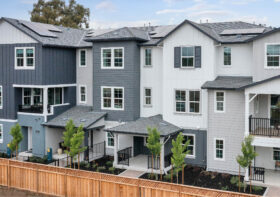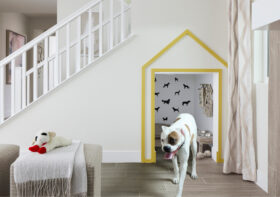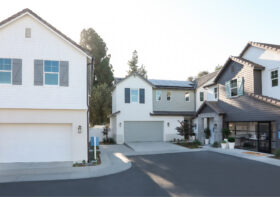Monterey Design Conference 2017
 |
Last month I attended the Monterey Design Conference (MDC), an AIA event which occurs every odd-numbered year at the Asilomar Conference Center in Pacific Grove, California. Asilomar, roughly translated, means “Refuge by the Sea” and what a refuge it is. George Bissell is known as the “Father of the MDC” which kicked off in 1979. Bissell appointed three co-chairs: Ray Kappe, Timothy Vreeland and one of my professors at Cal Poly Pomona, the late Bernard Zimmerman.
 |
Imagine a gathering of some of the most influential and inspirational architects and designers from all over the world presenting their work and design philosophies. Now draw them all to the Monterey coast in a scenic and sustainable setting with lodging, fine food and enough libations to keep the conversations lively and long. Asilomar was the main character of this three-day event.
 |
Between 1913 and 1929, Julia Morgan designed Asilomar and its 16 California Arts and Crafts style buildings. However, Asilomar was not Morgan’s most famous work; that distinction goes to La Cuesta Encantada. Some people refer to that structure by another name, Hearst Castle. Morgan received the AIA Gold Medal, posthumously, in 2014.
I have attended several trade shows, most of which can be described as product petting zoos, heavy on marketing and networking, which are all valuable and informative. This was a bit different. The MDC has the feel of “Summer Camp” aided by the fact that many attendees stayed at the conference center itself.
With only a small number of vendors including Graphisoft (ArchiCAD), James Hardie and ThermaTRU, the emphasis was on architecture and design.
An aggressive three-day schedule of lectures included several influential speakers:
Gere (pronounced “Jerry”) Kavanaugh spoke about her career as a graphic and industrial designer. She was the leader of the “Damsels of Design,” a team of talented women in the 1950’s who designed the interiors of GM cars, and later, a line of appliances for Frigidaire (a subsidiary of GM.) She condensed the gravity of her 60 years of design down to one encapsulating phrase, “I collect color and information.” She also encouraged designers not to be afraid of a cluttered workspace!
 |
 |
Shohei Shigematsu represented OMA (Office for Metropolitan Architecture, founded by Rem Koolhaus) and spoke about the firm’s work. One example was Milstein Hall at Cornell University in Ithaca, New York, which challenges our conceptions about floors, ceilings, and walls. He also attributed the rebirth of innovative and experimental modernism to the economic downturn of 2008. We are also seeing that trend here at WHA.
By many accounts, the highlight of the conference was a lecture by Sou Fujimoto, another Japanese architect who spoke about his childhood in the forests of Hokkaido and later, his education in Tokyo. Sou recognizes that the elements that create the forest and the city may be very different, but the emotions they create, are exactly the same. Pieces create protection and opportunity… inside and outside, brought together by blurred distinctions. His work was a clear and obvious extension of his life and lessons. Whereas, in far too many lectures, architectural esoterica becomes detached as it gives way to the trendy renderings and images that follow.
 |
 |
Sou’s outdoor/public restroom project is the most obvious and amusing example of his manipulations of comfort and vulnerability. With Fujimoto, it’s very clear how his upbringing and education inform his architecture.
Two years will be a long wait for the next Monterey Design Conference at Asilomar.
 |
Mark your calendars now for October, 25th – 27th, 2019.
For information on all the presenters, click http://aiacc.org/mdc/#speakers




Leave a Reply